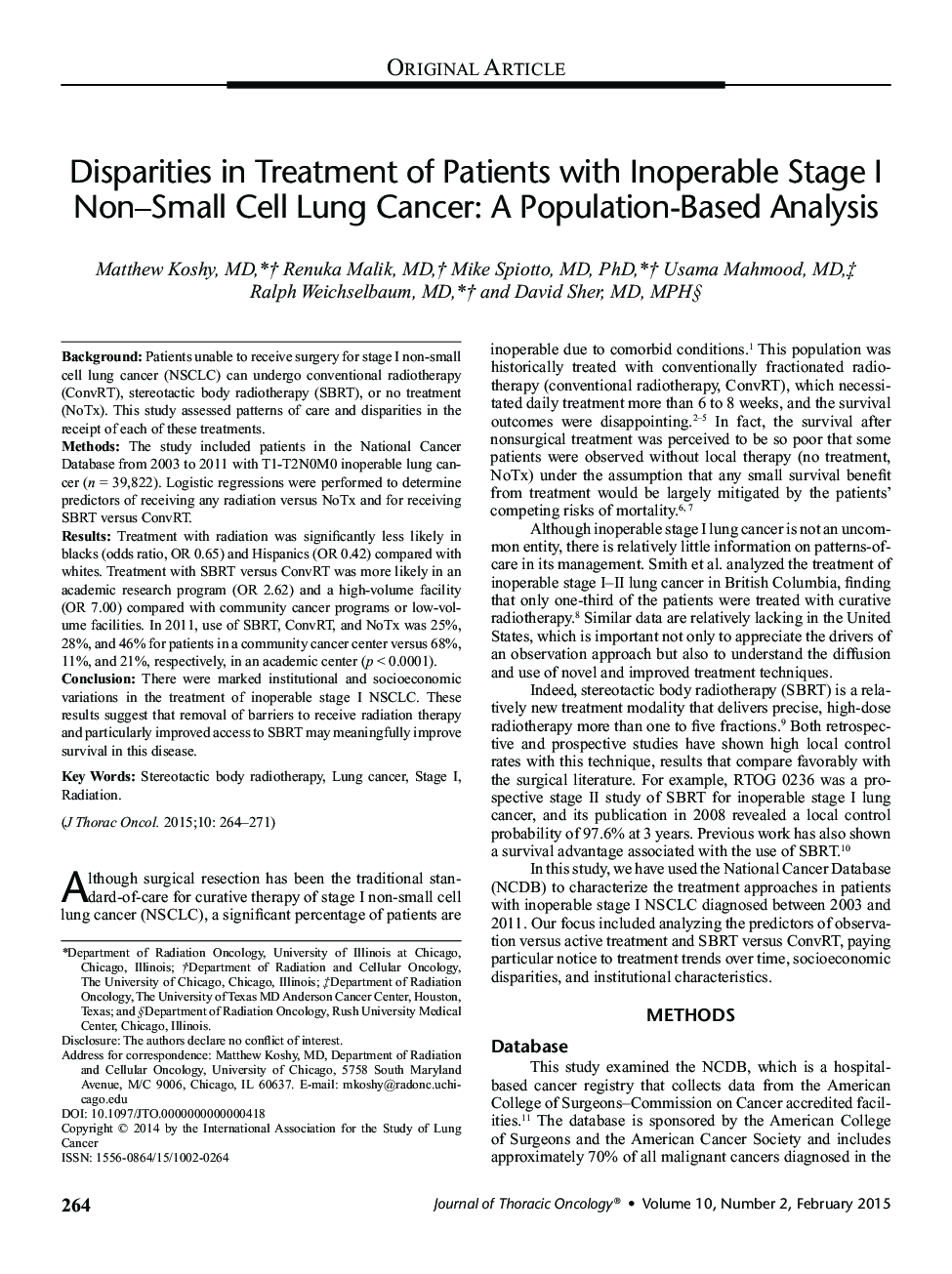| Article ID | Journal | Published Year | Pages | File Type |
|---|---|---|---|---|
| 6193203 | Journal of Thoracic Oncology | 2015 | 8 Pages |
BackgroundPatients unable to receive surgery for stage I non-small cell lung cancer (NSCLC) can undergo conventional radiotherapy (ConvRT), stereotactic body radiotherapy (SBRT), or no treatment (NoTx). This study assessed patterns of care and disparities in the receipt of each of these treatments.MethodsThe study included patients in the National Cancer Database from 2003 to 2011 with T1-T2N0M0 inoperable lung cancer (n = 39,822). Logistic regressions were performed to determine predictors of receiving any radiation versus NoTx and for receiving SBRT versus ConvRT.ResultsTreatment with radiation was significantly less likely in blacks (odds ratio, OR 0.65) and Hispanics (OR 0.42) compared with whites. Treatment with SBRT versus ConvRT was more likely in an academic research program (OR 2.62) and a high-volume facility (OR 7.00) compared with community cancer programs or low-volume facilities. In 2011, use of SBRT, ConvRT, and NoTx was 25%, 28%, and 46% for patients in a community cancer center versus 68%, 11%, and 21%, respectively, in an academic center (p < 0.0001).ConclusionThere were marked institutional and socioeconomic variations in the treatment of inoperable stage I NSCLC. These results suggest that removal of barriers to receive radiation therapy and particularly improved access to SBRT may meaningfully improve survival in this disease.
